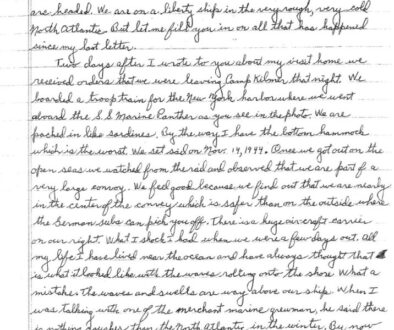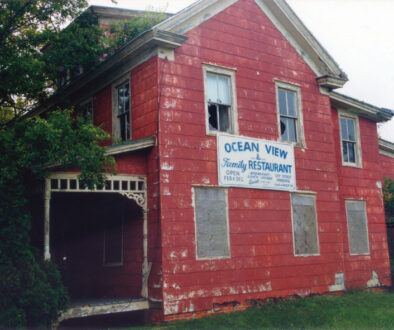Harvest Season is Crush Time

It’s harvest time, the big sink-or-swim moment where winemakers learn if Mother Nature’s been good to them. Local wineries kick into high gear starting in late August, when the literal fruit of the year’s labor is picked, crushed, fermented, bottled, and finally enjoyed. Harvest time means all hands on deck at Hawk Haven Vineyard & Winery, Cape May Winery, and Willow Creek Winery. But that month or so is just one part of a year’s work that results in award-winning wines.
The question of when to pick is perhaps the most important decision a winemaker is faced with. Ideally, grapes should be harvested at the peak of their growth, when sugar and acid levels are perfectly balanced. “We have an idea when we need to harvest, but the majority of it is really decided by the weather,” said Todd Wuerker of Hawk Haven Vineyard. “The acid, sugars and flavors have to be just right and you don’t want to run into a situation where you are rained out right at the end. That throws everything out of balance.”
Just like the pair of hawks that inspired the vineyard’s name, Todd and Kenna Wuerker are the perfect team. Todd is a third generation farmer and is in charge of the vineyard, wine making and property maintenance. Kenna oversees the business operations. Todd had been involved in traditional farming prior to planting his farm’s first vines, but he went to the experts when it came to learning more about winemaking. He received hands-on experience with Bill Hayes at Cape May Winery, in addition to classroom instruction and simply soaking up knowledge. Wuerker said that you never stop learning and adapting in the winemaking industry. Variables, even something as fickle as New Jersey weather, can make or break a wine-growing season.
Quality over quantity is the motto of Cape May Winery principal owners Toby Craig and Betsy Sole. And it’s also important to winemaker Darren Hesington, who started in Unionville in Hunterdon County. In addition to studying viticulture and enology, he credits Keith Bown, an Australian winemaker, for teaching him what it takes to move beyond “making home-made wine.”
“There’s no magic powder that creates great wine,” said Hesington. “If you have poor fruit, you’re going to have poor wine. If you have good fruit, you can make good wine.” Hesington said that the location of the vineyards between the ocean and the bay creates a superb growing environment, contributing to the county’s wine growing reputation. However, the weather in New Jersey can be wet, which grapes don’t like, and can also be unpredictable, which winemakers don’t like. A good harvest, Hesington said, is your reward for having beaten the weather.
The harvest is also on Mother Nature’s schedule at Willow Creek Winery, said Kevin Celli.
“She’s the boss,” Celli said, noting that reaching the delicate acid/sugar balance can fluctuate in a day. Celli’s pride and joy are his children, Annabella and Leonardo. But he also watches 13 other “kids” grow each day at Willow Creek winery, a 50-acre farm in West Cape May. To Celli, those varietals, which originate in Spain, Italy, France and Portugal, are as unique as 13 children.
In order to pick that perfect date to begin the harvest of a certain grape, Celli and vineyard manager Francisco Maldonado approach it with a combination of old world and modern scientific methods.
“Francisco and I like to go out and see how the fruit looks and then actually taste the grapes, see where they are, and then make a determination. Then we go out and check ourselves with the help of modern technology,” he said. “Some grapes we know we have to pick within a day, others we could wait a little longer.”
Celli learned his trade from Al Natali and Ray Pensari, owners and winemakers at Natali Vineyards. He learned their combination of modern and old-world growing techniques, and now incorporates them in the vineyards of Willow Creek. He even plays music, a mix of classical and reggae, when he works with the grapes. Now his staff knows to go to the radio before they even begin work for the day. “I started incorporating music after hearing it being piped into cellars of the wineries that produced some of the most amazing wine,” Celli said. “There’s a lot of science behind some of those old world stories,” he added. “You’d be surprised how well both styles work together.”
Once the winemakers determine that the percentages of acid, pH and sugars are where they need them to be, it’s time to start picking. Harvest time begins in late summer and continues for two and a half months. The grape picking is done by hand, and a group of ten to 20 people can pick two to three acres a day. Hand picking the grapes insures a level of gentleness and discrimination that a machine cannot possibly achieve.
A typical harvest day means prep work in the morning, picking in the afternoon, and crushing, destemming and pressing into the night. The bins of grapes then move from vineyard to winery, where they are raked into the de-stemmer and crusher to remove pieces of vine, stems, and leaves and break the grapes apart. The mixture of crushed, unfermented grapes is called “must.” At this stage, the grape must is either pressed or fermented depending on the type of grape.
Then, white grapes are moved to the presser to separate the juice from the skins. Red grapes are fermented in vats with their skins to give the wine its rich color. Because clear juice ferments better than cloudy juice, it is usually clarified. Once the suspended particles have settled to the bottom of the tank, the clear juice is run off into the fermentation tank.
Before fermentation, winemakers assess the taste of grapes coming in and start making decisions about what types of yeast they can use in their production. “The yeast can really enhance or hide flavors,” Wuerker explained. “It really does come down to experience and personal preference.”
From there, the wine is put into steel vats or oak barrels. Whites are normally bottled after about six months, and the reds after about 12 to 36 months.
The schedule stays hectic through the first week in November, but work continues at a fast pace year-round. Despite the busy schedule, Hesington knows he’s fortunate to be able to provide visitors to the winery with a great glass of wine. “The best part of this job is to be able to talk to people about the product that’s in the bottle,” he said. “Wine isn’t snobby. I tell people to ‘drink what you like.’”
While Wuerker, Hessington and Celli oversee everything that’s done in the vineyard, they wouldn’t be able to get much done without their hardworking, knowledgeable teams.
“None of this would be possible without the great people we employ and a great group of volunteer wine lovers,” Celli noted. “Without my team I can’t have good grapes, and no matter how great of a wine maker you are, you cannot make great wine from bad grapes. It would be impossible to create the type of wine that we want without their dedication.”
Despite the long hours that the harvest requires, Celli considers it a celebration. Maybe it’s his experience with old-world European harvest traditions, where an entire village participated in harvest and marked the end of the season with a lavish ball, but the idea of incorporating the community is something he’d like to see at Willow Creek. “There is a beautiful connection to nature that happens,” he said. “You see all of your work from the season come to fruition. How can you not celebrate?”
Every growing season is different and comes with its own set of challenges.The 2014 growing season and harvest was excellent, according to Wuerker. “That doesn’t mean it was easy,” he noted. “It was a challenging year. Nothing reacted in the typical way and nothing went the way I thought it would.”
The winter was longer and colder than normal, which pushed back the growing schedule, so the growing season was condensed into about one month. Wuerker said that they let more buds bloom, because they expected a lot of damage, and the result was more work for the vineyard team. During the harvest, a predicted rain storm threatened the crop, so Wuerker and his vineyard team picked 20 tons of grapes in a few short days.
“I may be a glutton for punishment, but I actually enjoy a challenge,” Wuerker laughed. “The joke that winemakers never drink wine socially during the harvest was actually true in my case.” However, he said, that challenging year has produced some truly amazing wines.
While the 2014 Hawk Haven wines may be spectacular to taste, the satisfaction of completing a successful and challenging year is something that can’t be bottled.









